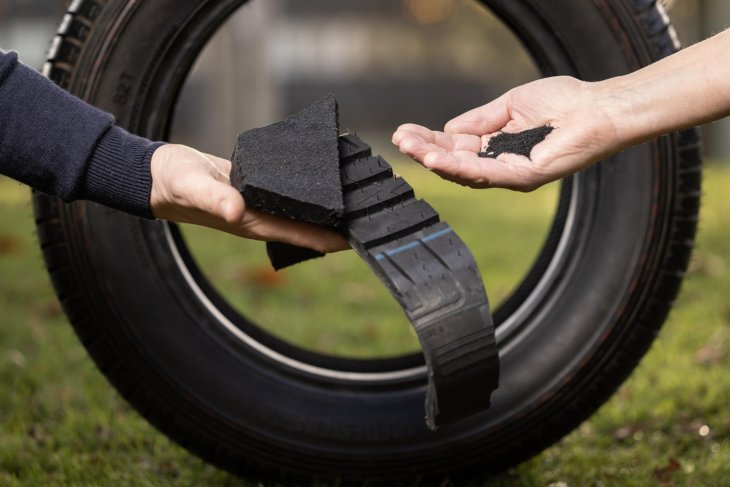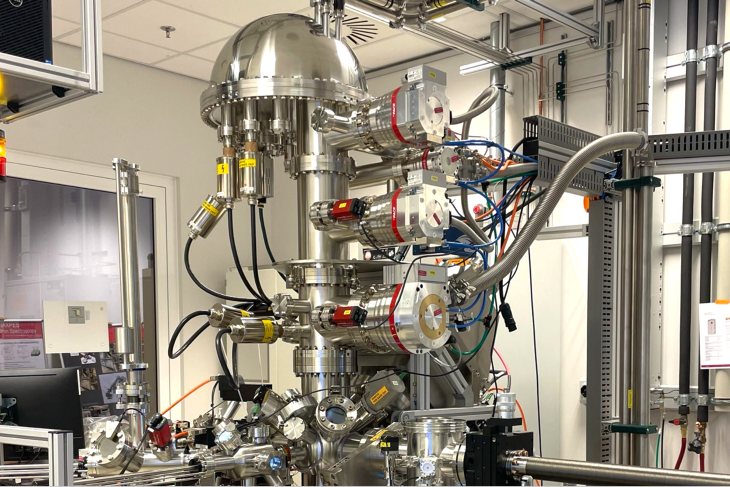"We are surrounded by rubber products, yet we are often unaware of them," says Blume. "When we put on our shoes, rubber soles provide comfort. Our windows close securely thanks to rubber seals. And when we drive, we do so safely and comfortably due to rubber tyres and rubber-based motor mounts that absorb engine vibrations." Rubber is a silent force that enhances mobility, safety, and everyday convenience without us even noticing.
What makes rubber unique?
The key to rubber lies in its elasticity. "The 'heart' of a rubber compound is the elastomer, which gives it its elastic response," Blume explains. "Think of a bouncing ball: when it hits the ground, it deforms, but always returns to its original shape. This unique property makes rubber essential for shock absorption and flexibility in countless applications."
This damping effect is used in everyday products and on a much larger scale. "In Japan, entire skyscrapers are built on rubber dampers to protect them from earthquake damage. What a fantastic material!"
Making rubber more sustainable
Like many industries, the rubber sector is striving for sustainability. However, this presents a major challenge. "Producing rubber can be compared to baking a cake," Blume says. "Different ingredients must be mixed and heated to achieve the final product. To create truly sustainable rubber, all these ingredients need to be environmentally friendly. That is a huge challenge."
Another problem is how rubber wears down, especially in tyres. "During their lifetime, tyres break down and release microplastics into the environment. This contributes to approximately 30% of global microplastic pollution," Blume explains. "In addition, many rubber products contain substances such as zinc oxide and DPG, which are harmful to the environment."
Latex from the rubber tree
Blume explains that rubber is made from latex, a milky fluid extracted from the rubber tree. Dandelions also contain latex. "This material consists of long polymer chains, similar to a plate of spaghetti," Blume says. "To make rubber strong and flexible, these chains must be linked together and reinforced with special fillers. This creates a robust network that stretches but always returns to its original shape."
A new way to make rubber
Recent breakthroughs in Blume and her team’s research shed new light on the chemical composition of rubber. "We discovered that the formation of the 3D network in modern tyre treads works in a completely different way than previously assumed for more than 100 years," she says. This discovery makes more eco-friendly production possible. "We have found that we no longer need zinc oxide and DPG to create a durable rubber product. That is a major step forward, especially considering that zinc oxide is harmful to all aquatic life and DPG releases aniline as a toxic degradation product. Both substances are released through tyre wear and contribute significantly to microplastic pollution in our environment. By eliminating these chemicals, we not only reduce the environmental footprint of the production process but also minimise the harmful impact of tyre wear on the ecosystem."
This breakthrough has big consequences. "Tyre manufacturers can now make more sustainable products at lower costs," Blume says. "Although we cannot stop tyres from wearing down, we can reduce the number of harmful substances they release. This brings us closer to fully sustainable tyres."
Towards a circular rubber industry
Rubber plays an essential role in our daily lives. Thanks to groundbreaking research such as that of Professor Anke Blume, major progress is being made towards making this versatile material more environmentally friendly.
While there is still much to do, recent innovations show that sustainable rubber technology is within reach. Perhaps the tyre of the future will not only be safer and more efficient but also fully circular.



